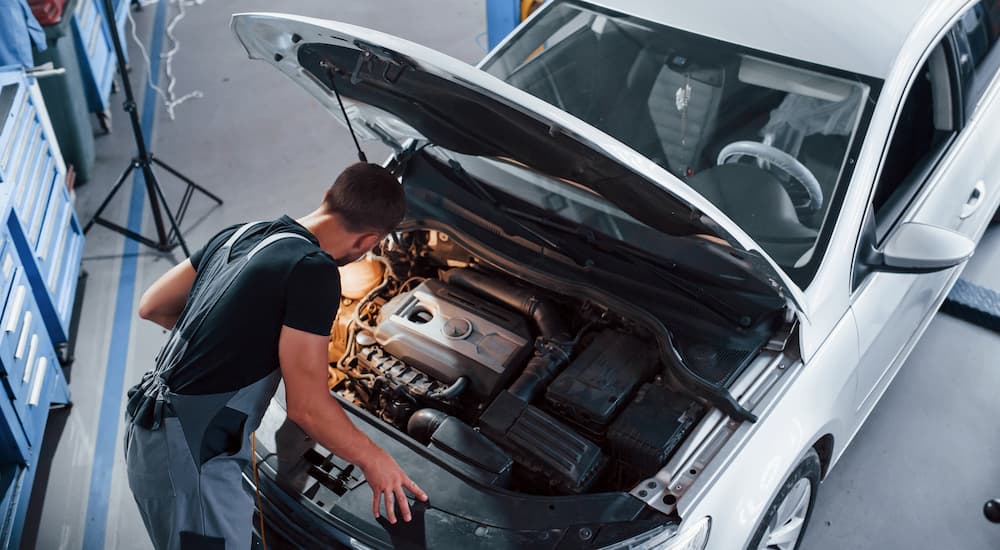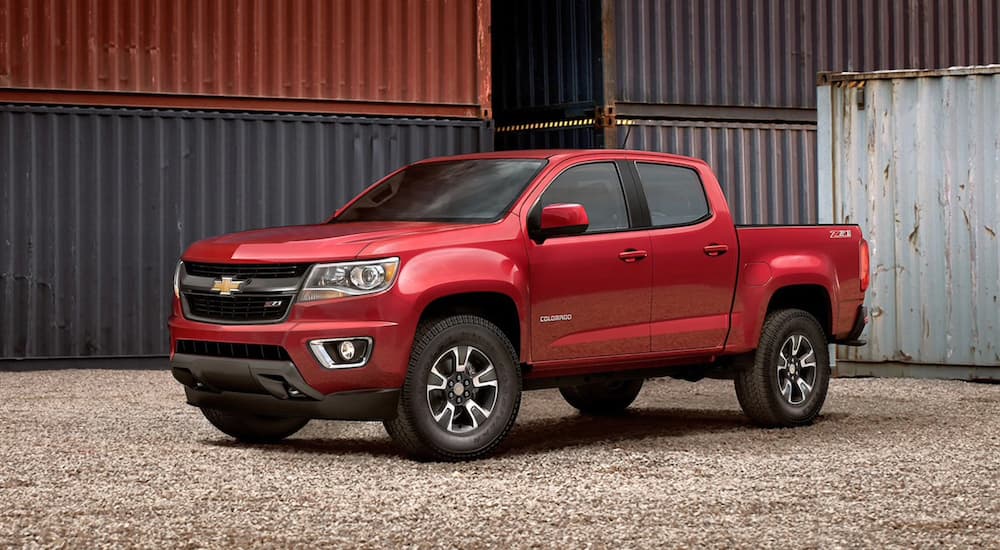Everyone knows that when shopping for a used vehicle, age and mileage are the two key factors to consider. The older a vehicle is, and the more wear and tear it has on it, the more likely it is to need major repairs. However, if you are visiting a used truck dealer, there is a third factor you might want to consider: engine hours. A lot of work trucks spend a good amount of their lives idling, which isn’t great for their engines. This doesn’t show up if you are only looking at age and mileage. A low-mileage truck might have spent every work day with its engine idling, adding wear and tear without racking up the miles. The good news is that most full-size pickups have an easy way to check engine hours, and that’s something you should definitely look for if you are shopping for a used truck.
Understanding Engine Hours
The mileage of a vehicle is something every driver instinctively understands. The greater the distance a car has traveled, the more likely it is that something will break and need to be replaced. For your average used car, mileage is a pretty reliable proxy for wear and tear, although it should always be combined with vehicle age to get a better idea of the overall condition of the car. For instance, a high odometer reading on a fairly new vehicle implies it saw a lot of highway miles, and will likely be in better condition than an older high-mileage vehicle. Alternatively, a low odometer reading on an old car might suggest that it wasn’t driven much or was only used for short trips, which can cause its own set of issues.
Looking at mileage and age is enough for commuter cars and the like, because if the engine is on, they are probably in motion. However, when it comes to work trucks and other commercial vehicles, it is a different story altogether. A lot of fleets will keep their vehicles idling for most of the day despite only driving short distances, putting a lot more wear and tear on the engine than the odometer would indicate. This is especially true of diesel trucks, because diesel engines don’t respond well to being turned on and off constantly. In order to better track the condition of these vehicles, you have to take into account the total engine hours as well as the age and displayed mileage of the vehicle.
Most modern trucks will give separate totals for driving engine hours and idle engine hours, which simplifies the math when shopping for a used truck. The general rule of thumb is that every hour the engine spends idling is equal to 33 miles on the odometer. As you can imagine, that adds up pretty quickly. For instance, if a five year old used truck was left idling for just an hour every day, that’s 1,825 idle hours or the equivalent to 60,225 miles on the clock. Since the average five year old truck will probably only have a bit over 60,000 miles on it in the first place, the truck that was left idling will have effectively twice the engine wear.

Checking Used Truck Engine Hours
All the American truck manufacturers, including Ford, Chevy, Ram, and GMC, have installed easy-to-use engine hour meters in their full-size pickup trucks. You can also find engine hour meters in many other commercial vehicles from these brands, including full-size SUVs like the Ford Expedition and Chevy Suburban and common fleet picks like the venerable Ford Crown Victoria. The bad news is that the Japanese brands have not jumped on the bandwagon, and American midsize trucks also lack engine hour meters. Of course, these vehicles are less likely to see fleet use, making an engine hour meter less important.
Chevy and GMC
GM was a pioneer when it came to engine hour meters, installing them in every Silverado and Sierra since the 1999 GMT800 platform. To view the total engine hours in the early models, simply push and hold the trip button when the engine is off. When the Silverado and Sierra were redesigned in 2014, a larger digital display was added to the instrument cluster. In these trucks, you can view the engine hours by simply navigating through the vehicle information pages.
Ford
Ford added an engine hour meter to the Super Duty models back in 2005, but it was a basic display that only showed total engine hours in the digital odometer display if you used a special procedure. In 2011, the system was updated to use the new digital driver display in the third-generation Super Duty. This made it easier to use and shows idle engine hours as well as total engine hours. An engine hour meter was finally added to the half-ton F-150 for its thirteenth generation in 2015. In all Ford trucks with the new system, you can quickly view engine hours by simply navigating through the vehicle information menus.
Ram
Like Chevy and GMC, older Dodge Ram trucks will let you check engine hours simply by pressing and holding the trip button when the truck is on. However, the fourth-generation Ram added an Electronic Vehicle Information Center display to the instrument cluster that made it much easier to see engine hours by simply navigating through the menus. It also shows both driving and idle hours separately, which is useful when shopping for a used truck.

What to Watch for With Engine Hours
The most important thing to consider when checking the engine hour monitor on a used truck is the total engine hours compared to the mileage of the vehicle. A high engine hour reading on a low mileage vehicle is an obvious warning sign that the truck saw a lot of idling and was probably used by a commercial fleet. If you don’t know the history of the vehicle, it is probably worth investigating before you buy. Try to make sure that the truck was properly maintained with oil changes and other services performed based on engine hours and not mileage. If so, then you don’t need to worry much about high engine hours.
However, a very low engine hour reading can also be suspicious. Unlike odometers, a lot of engine hour meters are rather easy to reset, so if a former fleet truck has low engine hours, that may not be accurate. Many older engine hour monitors are also known to randomly reset at times, so it wasn’t necessarily done intentionally. If a truck, especially an older model, has extremely low engine hours, it’s probably worth doing some digging to see if that is accurate. Fortunately, the more modern the truck is, the less likely this is to be a problem.
One thing to keep in mind for models that don’t separate driving hours from idle hours is that most vehicles have a lower average speed than you might expect. Many shoppers think that dividing the odometer reading by common highway speeds like 60 or 70 will tell you how many engine hours were spent on the road. However, this will actually massively overestimate the idle engine hours. Average speeds are usually much closer to 30 mph than 60 mph, so you will get closer to an accurate estimate of driving engine hours by dividing the total odometer reading by 30 or 40. Whatever is left after you have subtracted that number from the total engine hour reading is roughly the idle engine hours.
A Helpful Tool When Shopping for Used Trucks
While engine hours are a bit less clear-cut than age or mileage, they are still an important piece of information that can help inform your next used truck purchase. If you know how many idle engine hours a truck has, you can get a much better idea of its overall mechanical condition. Checking the engine hours can also help you determine whether a truck was previously owned by a fleet if you don’t have good records of the previous owners. Whenever you take a used truck for a test drive, don’t be afraid to ask the seller about engine hours. Better yet, dig through the menus and find them yourself.

